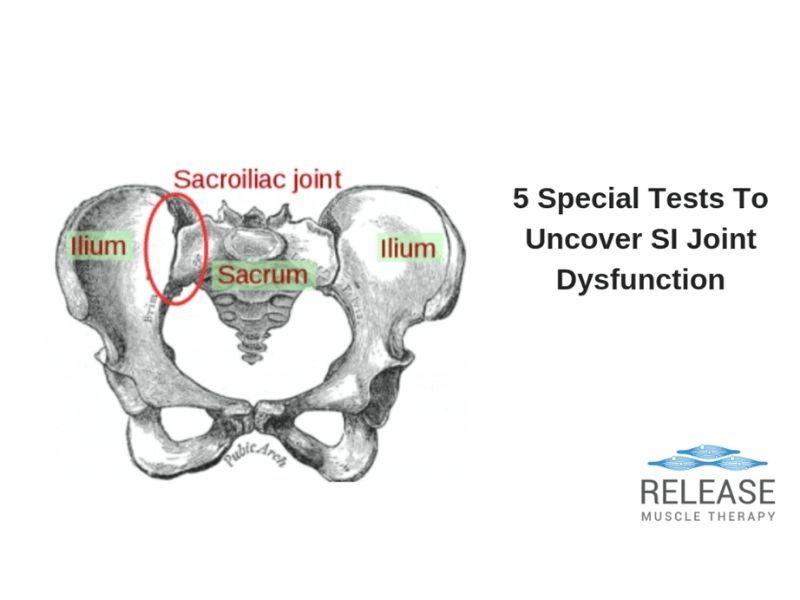Sacroiliac Joint Belts – Do They Work?
Table of Contents
- - Do These Belts REALLY Work?
- - Is there a simple test to find out if the belt COULD work for YOU?
- - Does it matter if you put the belt on standing vs. sitting vs. lying down?
- - SI Belt - How To Wear
- - How tight does the belt need to be?
- - Which belt is the best?
- - Does relying on an SI belt make your own muscles weak?
- - How long should you wear a sacroiliac belt?
Do These Belts REALLY Work?
In short, YES! In the video I state that the biggest issue is whether you actually HAVE pain coming from the sacroiliac joints or not. Attaining an accurate diagnosis of pain from the SI joints isn’t that easy, simply because there isn’t an established “gold-standard” test.
Is there a simple test to find out if the belt COULD work for YOU?
Yep! In the video above, I show a test that can be performed while lying on your back. Since the belt’s job is to compress the pelvis, we can mimic this action with a set of hands. Definitely ask someone to do this for you, which will be a much better test than attempting it on yourself.
Does it matter if you put the belt on standing vs. sitting vs. lying down?
Yes. I recommend only putting on sacroiliac joint belts while lying on your back, AFTER doing your corrective mobilizations. This way it functions as an SI brace to “lock in your work”.
SI Belt – How To Wear
There are a few things to know when wearing an SI belt. The video I created for Youtube has received tens of thousands of views and the comments clearly show that most people were not applying the belt correctly.
If you follow the steps I outline, you’ll get the most out of the belt and get results if indeed the belt is what you really need.
How tight does the belt need to be?
Its important to understand that the emphasis should be placed on the position of the belt, NOT how tight it is. One study in particular showed that a belt with a tension of 100 N did not significantly differ from one at 50 N in terms of reducing sacroiliac motion.
Which belt is the best?
Sacroiliac joint belts all do the same thing so its really a matter of comfort, since most people who benefit from it will wear it often. Nothing is worse than having to deal with a poorly designed belt that is constantly riding upward when you sit or move.
Does relying on an SI belt make your own muscles weak?
No. Using a sacroiliac joint belt is not the same type of thing as a lumbar spine brace. SI joint instability is a ligamentous/joint problem. Since there are no muscles that directly move those joints, wearing the belt will not weaken anything. You can wear it 24/7 if you want.
How long should you wear a sacroiliac belt?
There are two aspects of this question. First, you “can” wear a SI joint stabilization belt pretty much throughout the day.
The factors that should be considered include the stress on skin (chafing), and altering your ability to move freely due to any misplacement of the belt. If you wear it properly and not too tight, you should be able to wear it comfortably for longer stretches of time.
The second aspect is how long over time should you commit to using a SI joint belt? This is going to depend on the primary reasoning for wearing it (damage to sacroiliac ligaments, short term pregnancy or post pregnancy, etc).
Generally speaking, the goal ultimately is to not needing the belt and relying on your on musculoskeletal stability improved functioning. So, you should work closely with your therapist for a plan for easing away from it.
This could take as little as a week, to months, again, all depending on the initial reasoning why you’re wearing it.
SI joint pain belts are really a relatively short-term crutch. They aren’t the “main show”!
Sam Visnic
I’ve spent my life studying the fundamental aspects of human health with a focus on movement and clinical massage therapy. In a world of specialists, surgical procedures, drugs and quick fix remedies, I’m committed to finding and developing strategies that help people stuck at the “gap”. Over the last 20 years I’ve studied dozens of systems and methodologies for uncovering the root cause of aches and pains, along with postural and movement issues. Pain science, the art and science of hands-on soft tissue massage techniques, myofascial release, and coaching movement is essential in my practice. Integrating different methods but above all deciphering WHEN to use different techniques with different people and situations, along with integration of movements that people want to be able to do again is the key to long term success with my incredible track record with clients. Understanding the various elements that contribute to conditions and the power of communication and education makes my Release Muscle Therapy program separate from other hands-on therapy approaches.
Blogs You May Be Interested In
Categories
-
Deep Gluteal Pain Syndrome
-
Deltoids
-
Fallbrook
-
Foam Rolling
-
Glutes
-
Hamstrings
-
Hypnosis For Pain
-
Lats
-
Levator Scapulae
-
Lifestyle
-
Massage Therapy
-
Mobility
-
Movement and Exercise
-
Murrieta
-
Muscles
-
Nutrition
-
Obliques
-
Pain
-
Pectorals
-
Piriformis
-
Plantar Fasciitis
-
Product Review
-
Psoas
-
Quadratus Lumborum
-
Quadriceps
-
Rhomboids
-
Serratus Anterior
-
SI Joint
-
Sternocleidomastoid
-
Stretching
-
Subscapularis
-
Temecula
-
TMJ
-
Trapezius
-
Uncategorized
















